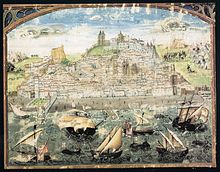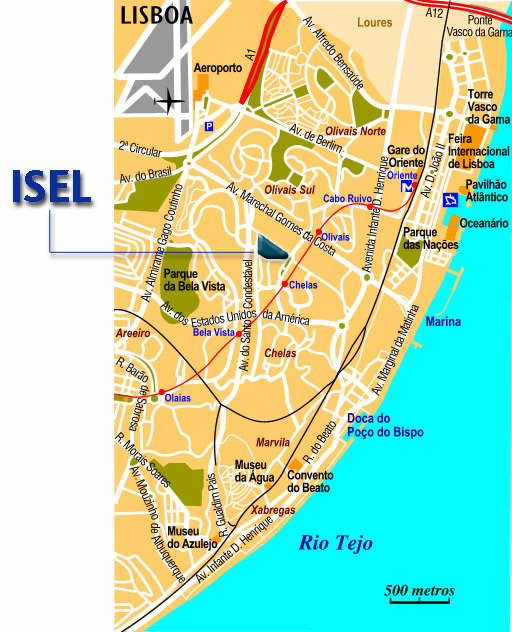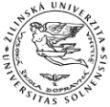Venue
Lisbon
| Lisbon Lisboa |
|||
|---|---|---|---|

Clockwise, from top: Eduardo VII Park,
Commerce Square with the Alfama district, the Sé de Lisboa,
panoramic view of the city from São Jorge Castle with the 25 de Abril Bridge
at background, the Belém Tower and the Parque das Nações with the
Vasco da Gama Bridge at background.
|
|||
|
|||
| Etymology: Lisboa, Portuguese derivative of Latin Ulyssippo after Ulysses; and/or Roman Olissipona, for the name of the Tagus | |||
| Nickname(s): A Cidade das Sete Colinas (The City of Seven Hills), Rainha do Mar (Queen of the Sea), A Cidade da Tolerância (The City of Tolerance), A Cidade da Luz (The City of the Light) | |||
| Motto(s): Muito Nobre e Sempre Leal (Very Noble and Always Loyal) | |||
| Website | http://www.cm-lisboa.pt/ | ||
Lisbon
(/ˈlɪzbən
/; Portuguese: Lisboa, IPA:
[liʒˈboɐ]
(![]() listen))
[2] is the capital and the largest city of
Portugal, with an estimated population of 505,526
[1] within its administrative limits in an area of 100.05 km2.
[3] Its
urban area extends beyond the city's administrative limits with a population of around 2.8 million people,
being the 11th-most populous urban area
in the European Union.
[4] About 3 million people live in the
Lisbon Metropolitan Area (which represents approximately 27% of the country's population).
[5] It is mainland
Europe's westernmost capital city and the only one along the Atlantic coast. Lisbon lies in the western
Iberian Peninsula on the Atlantic Ocean and
the River Tagus. The westernmost areas of its metro area form the westernmost point of
Continental Europe, which is known as Cabo da Roca,
located in the Sintra Mountains
listen))
[2] is the capital and the largest city of
Portugal, with an estimated population of 505,526
[1] within its administrative limits in an area of 100.05 km2.
[3] Its
urban area extends beyond the city's administrative limits with a population of around 2.8 million people,
being the 11th-most populous urban area
in the European Union.
[4] About 3 million people live in the
Lisbon Metropolitan Area (which represents approximately 27% of the country's population).
[5] It is mainland
Europe's westernmost capital city and the only one along the Atlantic coast. Lisbon lies in the western
Iberian Peninsula on the Atlantic Ocean and
the River Tagus. The westernmost areas of its metro area form the westernmost point of
Continental Europe, which is known as Cabo da Roca,
located in the Sintra Mountains
Lisbon is recognised as an alpha-level global city by the Globalization and World Cities (GaWC) Study Group because of its importance in finance, commerce, media, entertainment, arts, international trade, education and tourism. [6] Lisbon is the only Portuguese city besides Porto to be recognised as a global city. [7] [8] It is one of the major economic centres on the continent, with a growing financial sector and one of the largest container ports on Europe's Atlantic coast. [9] Additionally, Humberto Delgado Airport served 26.7 million passengers in 2017, being the busiest airport in Portugal, the 3rd busiest in the Iberian Peninsula and the 20th busiest in Europe, [10] and the motorway network and the high-speed rail system of Alfa Pendular links the main cities of Portugal (such as Braga, Porto and Coimbra) to Lisbon.[11] The city is the 9th-most-visited city in Southern Europe, with 3,320,300 tourists in 2017. [12] The Lisbon region contributes with a higher GDP PPP per capita than any other region in Portugal. Its GDP amounts to 96.3 billion USD and thus $32,434 per capita. [13] [14] The city occupies the 40th place of highest gross earnings in the world. [15] Most of the headquarters of multinational corporations in Portugal are located in the Lisbon area. [16] It is also the political centre of the country, as its seat of Government and residence of the Head of State.
Lisbon is one of the oldest cities in the world, and one of the oldest in Western Europe, predating other modern European capitals such as London, Paris, and Rome by centuries. Julius Caesar made it a municipium called Felicitas Julia, adding to the name Olissipo. Ruled by a series of Germanic tribes from the 5th century, it was captured by the Moors in the 8th century. In 1147, the Crusaders under Afonso Henriques reconquered the city and since then it has been a major political, economic and cultural centre of Portugal. Unlike most capital cities, Lisbon's status as the capital of Portugal has never been granted or confirmed officially – by statute or in written form. Its position as the capital has formed through constitutional convention, making its position as de facto capital a part of the Constitution of Portugal.
History of Lisbon
Pre-Roman[edit]
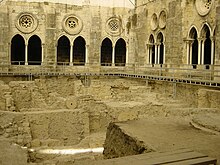
Phoenician archaeological dig in the Lisbon Cathedral cloisters |
During the Neolithic period, the region was inhabited by Pre-Celtic tribes, who built religious and funerary monuments, megaliths, dolmens and menhirs, which still survive in areas on the periphery of Lisbon. [1] The Indo-European Celts invaded in the 1st millennium BC, mixing with the Pre-Indo-European population, thus giving rise to Celtic-speaking local tribes such as the Cempsi. Although the first fortifications on Lisbon's Castelo hill are known to be no older than the 2nd century BC, recent archaeological finds have shown that Iron Age people occupied the site from the 8th to 6th centuries BC. [2] [3] [4] This indigenous settlement maintained commercial relations with the Phoenicians, which would account for the recent findings of Phoenician pottery and other material objects. Archaeological excavations made near the Castle of São Jorge (Castelo de São Jorge) and Lisbon Cathedral indicate a Phoenician presence at this location since 1200 BC, [5] and it can be stated with confidence that a Phoenician trading post stood on a site [6] [7] now the centre of the present city, on the southern slope of the Castle hill.[8] The sheltered harbour in the Tagus River estuary was an ideal spot for an Iberian settlement and would have provided a secure harbour for unloading and provisioning Phoenician ships. [9] The Tagus settlement was an important centre of commercial trade with the inland tribes, providing an outlet for the valuable metals, salt and salted-fish they collected, and for the sale of the Lusitanian horses renowned in antiquity. |
Although the first fortifications on Lisbon's Castelo hill are known to be no older than the 2nd century BC, recent archaeological finds have shown that Iron Age people occupied the site from the 8th to 6th centuries BC. [2] [3] [4] This indigenous settlement maintained commercial relations with the Phoenicians, which would account for the recent findings of Phoenician pottery and other material objects. Archaeological excavations made near the Castle of São Jorge (Castelo de São Jorge) and Lisbon Cathedral indicate a Phoenician presence at this location since 1200 BC, [5] and it can be stated with confidence that a Phoenician trading post stood on a site [6] [7] now the centre of the present city, on the southern slope of the Castle hill.[8] The sheltered harbour in the Tagus River estuary was an ideal spot for an Iberian settlement and would have provided a secure harbour for unloading and provisioning Phoenician ships. [9] The Tagus settlement was an important centre of commercial trade with the inland tribes, providing an outlet for the valuable metals, salt and salted-fish they collected, and for the sale of the Lusitanian horses renowned in antiquity.
According to legend, the location was named for the mythical Ulysses, who founded the settlement after he left Troy to escape the Greek coalition. [10] Later, the Greek name appeared in Vulgar Latin in the form Olissipona.
Roman era [edit ]

Section of the Cerca Velha (Old Wall).
Originally built by Romans, later rebuilt by the Moors.[11] |
Following the defeat of Hannibal in 202 BCE during the Punic wars, the Romans determined to deprive Carthage of its most valuable possession: Hispania (the Iberian Peninsula). The defeat of Carthaginian forces by Scipio Africanus in Eastern Hispania allowed the pacification of the west, led by Consul Decimus Junius Brutus Callaicus. Decimus obtained the alliance of Olissipo (which sent men to fight alongside the Roman Legions against the northwestern Celtic tribes) by integrating it into the empire, as the Municipium Cives Romanorum Felicitas Julia. Local authorities were granted self-rule over a territory that extended 50 kilometres (31 miles); exempt from taxes, its citizens were given the privileges of Roman citizenship, and it was then integrated with the Roman province of Lusitania (whose capital was Emerita Augusta). Lusitanian raids and rebellions during Roman occupation required the construction of a wall around the settlement. During Augustus' reign, the Romans also built a great theatre; the Cassian Baths (underneath Rua da Prata); temples to Jupiter, Diana, Cybele, Tethys and Idea Phrygiae (an uncommon cult from Asia Minor), in addition to temples to the Emperor; a large necropolis under Praça da Figueira; a large forum and other buildings such as insulae (multi-storied apartment buildings) in the area between the Castle Hill and the historic city core. Many of these ruins were first unearthed during the mid-18th century (when the recent discovery of Pompeii made Roman archaeology fashionable among Europe's upper classes). |
The city prospered as piracy was eliminated and technological advances were introduced, consequently Felicitas Julia became a centre of trade with the Roman provinces of Britannia (particularly Cornwall) and the Rhine. Economically strong, Olissipo was known for its garum (a fish sauce highly prized by the elites of the empire and exported in amphorae to Rome), wine, salt and horse-breeding, while Roman culture permeated the hinterland. The city was connected by a broad road to Western Hispania's two other large cities, Bracara Augusta in the province of Tarraconensis (Portuguese Braga), and Emerita Augusta, the capital of Lusitania. The city was ruled by an oligarchical council dominated by two families, the Julii and the Cassiae, although regional authority was administered by the Roman Governor of Emerita or directly by Emperor Tiberius. Among the majority of Latin speakers lived a large minority of Greek traders and slaves.
Around 80 BC, the Roman Quintus Sertorius led a rebellion against the dictator Sulla. During this period, he organised the tribes of Lusitania and Hispania and was on the verge of forming an independent province in the Sertorian War when he was assassinated.
Olissipo, like most great cities in the Western Empire, was a centre for the dissemination of Christianity. Its first attested Bishop was Potamius (c. 356), and there were several martyrs during the period of persecution of the Christians: Maxima, Verissimus and Eulalia of Mérida are the most significant examples. By the time of the Fall of Rome, Olissipo had become a notable Christian centre.
Following the disintegration of the Western Roman Empire there were barbarian invasions; between 409 and 429 the city was occupied successively by Sarmatians, Alans and Vandals. The Germanic Suebi, who established a kingdom in Gallaecia (modern Galicia and northern Portugal), with its capital in Bracara Augusta, also controlled the region of Lisbon until 585. In 585, the Suebi Kingdom was integrated into the Germanic Visigothic Kingdom of Toledo, which comprised all of the Iberian Peninsula: Lisbon was then called Ulishbona.
Middle Ages[edit]
|
On 6 August 711, Lisbon was taken by Muslim forces. These conquerors, who were mostly Berbers and Arabs from North Africa and the Middle East, built many mosques and houses, rebuilt the city wall (known as the Cerca Moura) and established administrative control, while permitting the diverse population (Muladi, Mozarabs, Berbers, Arabs, Jews, Zanj and Saqaliba) to maintain their socio-cultural lifestyles. Mozarabic was the native language spoken by most of the Christian population although Arabic was widely known as spoken by all religious communities. Islam was the official religion practised by the Arabs, Berbers, Zanj, Saqaliba and Muladi (muwalladun). The Muslim influence is still visible present in the Alfama district, an old quarter of Lisbon that survived the 1755 Lisbon earthquake: many place-names are derived from Arabic and the Alfama (the oldest existing district of Lisbon) was derived from the Arabic "al-hamma". |
For a brief time, Lisbon was an independent Muslim kingdom known as the Taifa of Lisbon, before being conquered by the larger Taifa of Badajoz in 1094.
In 1108 Lisbon was raided and occupied by Norwegian crusaders led by Sigurd I on their way to the Holy Land as part of the Norwegian Crusade and occupied by crusader forces for three years. [12] It was taken by the Moorish Almoravids in 1111.
|
In 1147, as part of the Reconquista, crusader knights led by Afonso I of Portugal besieged and conquered Lisbon. The city, with around 154,000 residents at the time, was returned to Christian rule. The reconquest of Portugal and re-establishment of Christianity is one of the most significant events in Lisbon's history, described in the chronicle Expugnatione Lyxbonensi, which describes, among other incidents, how the local bishop was killed by the crusaders and the city's residents prayed to the Virgin Mary as it happened. Some of the Muslim residents converted to Roman Catholicism, and most of those who did not convert fled to other parts of the Islamic world, primarily Muslim Spain and North Africa. All mosques were either completely destroyed or converted into churches. As a result of the end of Muslim rule, spoken Arabic quickly lost its place in the everyday life of the city and disappeared altogether. With its central location, Lisbon became the capital city of the new Portuguese territory in 1255. The first Portuguese university was founded in Lisbon in 1290 by King Denis I; for many years the Studium Generale (General Study) was transferred intermittently to Coimbra, where it was installed permanently in the 16th century as the University of Coimbra. In 1384, the city was besieged by King Juan I of Castille, as a part of the ongoing 1383–1385 Crisis. The result of the siege was a victory for the Portuguese led by Nuno Álvares Pereira. |
During the last centuries of the Middle Ages, the city expanded substantially and became an important trading post with both Northern European and Mediterranean cities.
Early Modern[edit]
Most of the Portuguese expeditions of the Age of Discovery left Lisbon during the period from the end of the 15th century to the beginning of the 17th century, including Vasco da Gama's expedition to India in 1498. In 1506, 3,000 Jews were massacred in Lisbon. [13] The 16th century was Lisbon's golden era: the city was the European hub of commerce between Africa, India, the Far East and later, Brazil, and acquired great riches by exploiting the trade in spices, slaves, sugar, textiles and other goods. This period saw the rise of the exuberant Manueline style in architecture, which left its mark in many 16th-century monuments (including Lisbon's Belém Tower and Jerónimos Monastery, which were declared UNESCO World Heritage Sites). A description of Lisbon in the 16th century was written by Damião de Góis and published in 1554. [14] Portugal lost its independence to Spain after the succession crisis of 1580, initiating a sixty-year period of dual monarchy in Portugal and Spain under the Spanish Habsburgs.[15] [16] This is referred to as the "Philippine Dominion" (Domínio Filipino), since all three Spanish kings during that period were called Philip (Filipe). The Portuguese Restoration War, which began with a coup d'état organised by the nobility and bourgeoisie in Lisbon and executed on 1 December 1640, restored Portuguese independence. The period from 1640 to 1668 was marked by periodic skirmishes between Portugal and Spain, as well as short episodes of more serious warfare, until the Treaty of Lisbon was signed in 1668. |
In the early 18th century, gold from Brazil allowed King John V to sponsor the building of several Baroque churches and theatres in the city.
|
Prior to the 18th century, Lisbon had experienced several significant earthquakes – eight in the 14th century, five in the 16th century (including the 1531 earthquake that destroyed 1,500 houses and the 1597 earthquake in which three streets vanished), and three in the 17th century. On 1 November 1755, the city was destroyed by another devastating earthquake, which killed an estimated 30,000 to 40,000 Lisbon residents [17] of a population estimated at between 200,000 and 275,000, [18][19] and destroyed 85 percent of the city's structures.[20] Among several important buildings of the city, the Ribeira Palace and the Hospital Real de Todos os Santos were lost. In coastal areas, such as Peniche, situated about 80 km (50 mi) north of Lisbon, many people were killed by the following tsunami. |
By 1755, Lisbon was one of the largest cities in Europe; the catastrophic event shocked the whole of Europe and left a deep impression on its collective psyche. Voltaire wrote a long poem, Poême sur le désastre de Lisbonne, shortly after the quake, and mentioned it in his 1759 novel Candide (indeed, many argue that this critique of optimism was inspired by that earthquake). Oliver Wendell Holmes, Sr. also mentions it in his 1857 poem, The Deacon's Masterpiece, or The Wonderful One-Hoss Shay.
|
After the 1755 earthquake, the city was rebuilt largely according to the plans of Prime Minister Sebastião José de Carvalho e Melo, the 1st Marquess of Pombal; the lower town began to be known as the Baixa Pombalina (Pombaline central district). Instead of rebuilding the medieval town, Pombal decided to demolish what remained after the earthquake and rebuild the city centre in accordance with principles of modern urban design. It was reconstructed in an open rectangular plan with two great squares: the Praça do Rossio and the Praça do Comércio. The first, the central commercial district, is the traditional gathering place of the city and the location of the older cafés, theatres and restaurants; the second became the city's main access to the River Tagus and point of departure and arrival for seagoing vessels, adorned by a triumphal arch (1873) and monument to King Joseph I. |
 The Marquis of Pombal's enlightened plans for rebuilding Lisbon. |
Late modern and contemporary[edit]
|
In the first years of the 19th century, Portugal was invaded by the troops of Napoléon Bonaparte, forcing Queen Maria I and Prince-Regent John (future John VI) to flee temporarily to Brazil. By the time the new King returned to Lisbon, many of the buildings and properties were pillaged, sacked or destroyed by the invaders. During the 19th century, the Liberal movement introduced new changes into the urban landscape. The principal areas were in the Baixa and along the Chiado district, where shops, tobacconists shops, cafés, bookstores, clubs and theatres proliferated. The development of industry and commerce determined the growth of the city, seeing the transformation of the Passeio Público, a Pombaline era park, into the Avenida da Liberdade, as the city grew farther from the Tagus. |
Lisbon was the site of the regicide of Carlos I of Portugal in 1908, an event which culminated two years later in the First Republic.
|
The city refounded its university in 1911 after centuries of inactivity in Lisbon, incorporating reformed former colleges and other non-university higher education schools of the city (such as the Escola Politécnica – now Faculdade de Ciências). Today there are two public universities in the city (University of Lisbon and New University of Lisbon), a public university institute (ISCTE - Lisbon University Institute) and a polytechnic institute (IPL – Instituto Politécnico de Lisboa). During World War II, Lisbon was one of the very few neutral, open European Atlantic ports, a major gateway for refugees to the U.S. and a haven for spies. More than 100,000 refugees were able to flee Nazi Germany via Lisbon. [21] During the Estado Novo regime (1926–1974), Lisbon was expanded at the cost of other districts within the country, resulting in nationalist and monumental projects. New residential and public developments were constructed; the zone of Belém was modified for the 1940 Portuguese Exhibition, while along the periphery new districts appeared to house the growing population. The inauguration of the bridge over the Tagus allowed rapid connection between both sides of the river. |
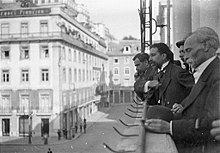 The Proclamation of the Portuguese Republic in Lisbon's Municipal Square in 1910. |
Lisbon was the site of three revolutions in the 20th century. The first, the 5 October 1910 revolution, brought an end to the Portuguese monarchy and established the highly unstable and corrupt Portuguese First Republic. The 6 June 1926 revolution would see the end of that first republic and firmly establish the Estado Novo, or the Portuguese Second Republic, as the ruling regime. The final revolution, the Carnation Revolution, would take place on 25 April 1974 and would end the right-wing Estado Novo and reform the country as the current Portuguese Third Republic.
|
In the 1990s, many of the districts were renovated and projects in the historic quarters were established to modernise those areas; architectural and patrimonial buildings were renovated; the northern margin of the Tagus was re-purposed for leisure and residential use; the Vasco da Gama Bridge was constructed; and the eastern part of the municipality was re-purposed for Expo '98, to commemorate the 500th anniversary of Vasco da Gama's sea voyage to India, a voyage that would bring immense riches to Lisbon and cause many of Lisbon's landmarks to be built. In 1988, a fire in the historical district of Chiado saw the destruction of many 18th-century Pombaline style buildings. A series of restoration works has brought the area back to its former self and made it a high-scale shopping district. |
The Lisbon Agenda was a European Union agreement on measures to revitalise the EU economy, signed in Lisbon in March 2000. In October 2007 Lisbon hosted the 2007 EU Summit, where agreement was reached regarding a new EU governance model. The resulting Treaty of Lisbon was signed on 13 December 2007 and came into force on 1 December 2009.
Parts of this text and pictures were copied from 
Conference Venue
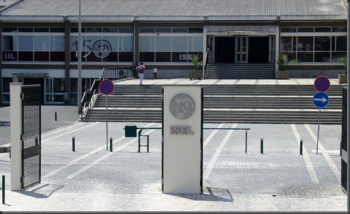
|
|
Getting to Lisbon and ISEL 
By Plane
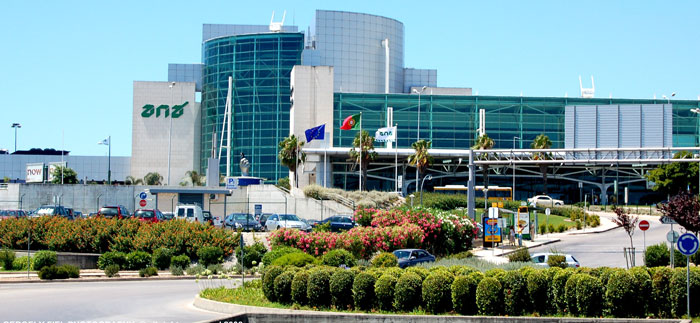
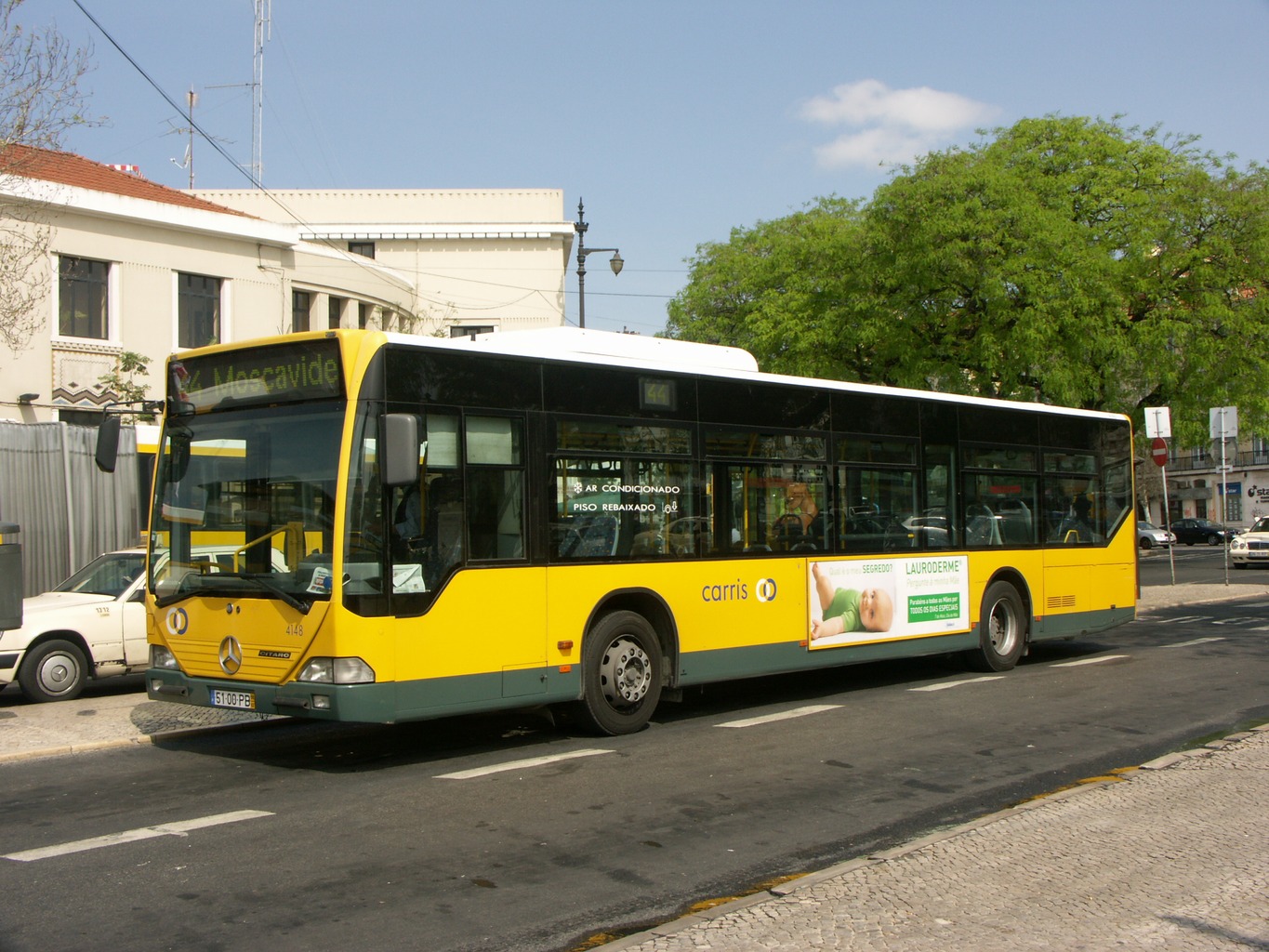
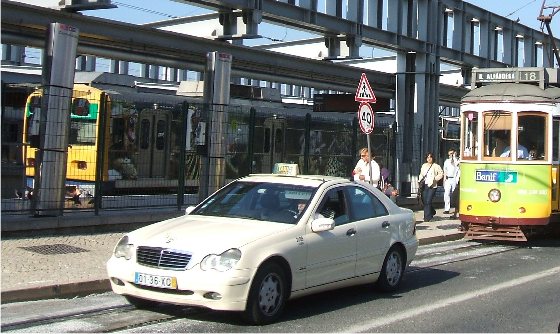
|
Lisbon's Portela Airport - (other website) is located within the city limits. It is the headquarters and hub for TAP Portugal as well as a hub for Easyjet, SATA International, Luzair, EuroAtlantic Airways, Portugália, White Airways, and High Fly airlines Bus from Airport There is a bus network from the airport that offers services to passengers who are travelling to various destinations from the airport. For passengers heading for Cais do Sodre Railway Station the No. 91 bus service offered by Carris is the bus for you. There are also other bus routes operating from the airport heading to various locations within the city. A ticket to the city center should cost €1.35. One also has an option of purchasing an all day ticket at €3.35. - AEROBUS: Linking the Airport to downtown Lisbon and Cais do Sodre (every 20 minutes from 7 a.m. to 9 p.m.) - CARRIS BUSES: No. 5, 8, 22, 44, 45, 83; Taxi from Airport Outside the terminal buildings one is able to obtain taxi services. These generally charge an average of €15 to the city center. Some of the taxis have meters in them. They charge a minimum of €2.35 during the day and €2.50 at night. Though some of the taxi drivers may take longer routes to keep the meter running, the trip should take an average of 15 minutes to the city center. Metro from the Airport There is a direct metroline from the Airport to the Gare do Oreinte trainstation and then on to Olivais and Chelas metro stations |
By Train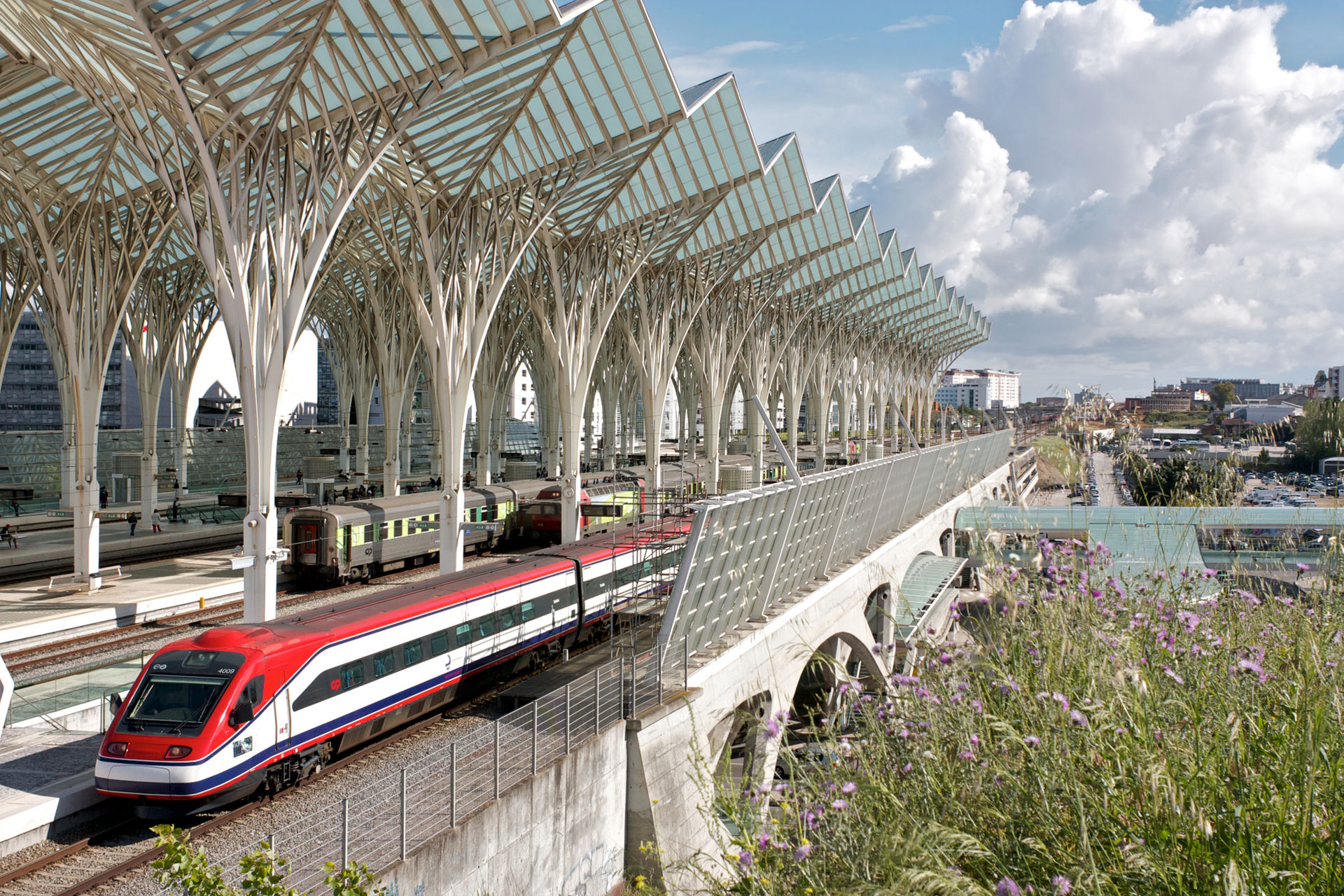

|
There are four commuter train lines arriving in Lisbon: the Cascais, Sintra and Azambuja lines (operated by CP Comboios de Portugal), as well as a fourth line to Setúbal (operated by Fertagus) crossing the Tagus river, over the 25 de Abril Bridge. The major railway stations are Santa Apolónia, Rossio,Gare do Oreinte trainstation, Entrecampos, and Cais do Sodre Railway Station. You can download the train link map here. |
By Metro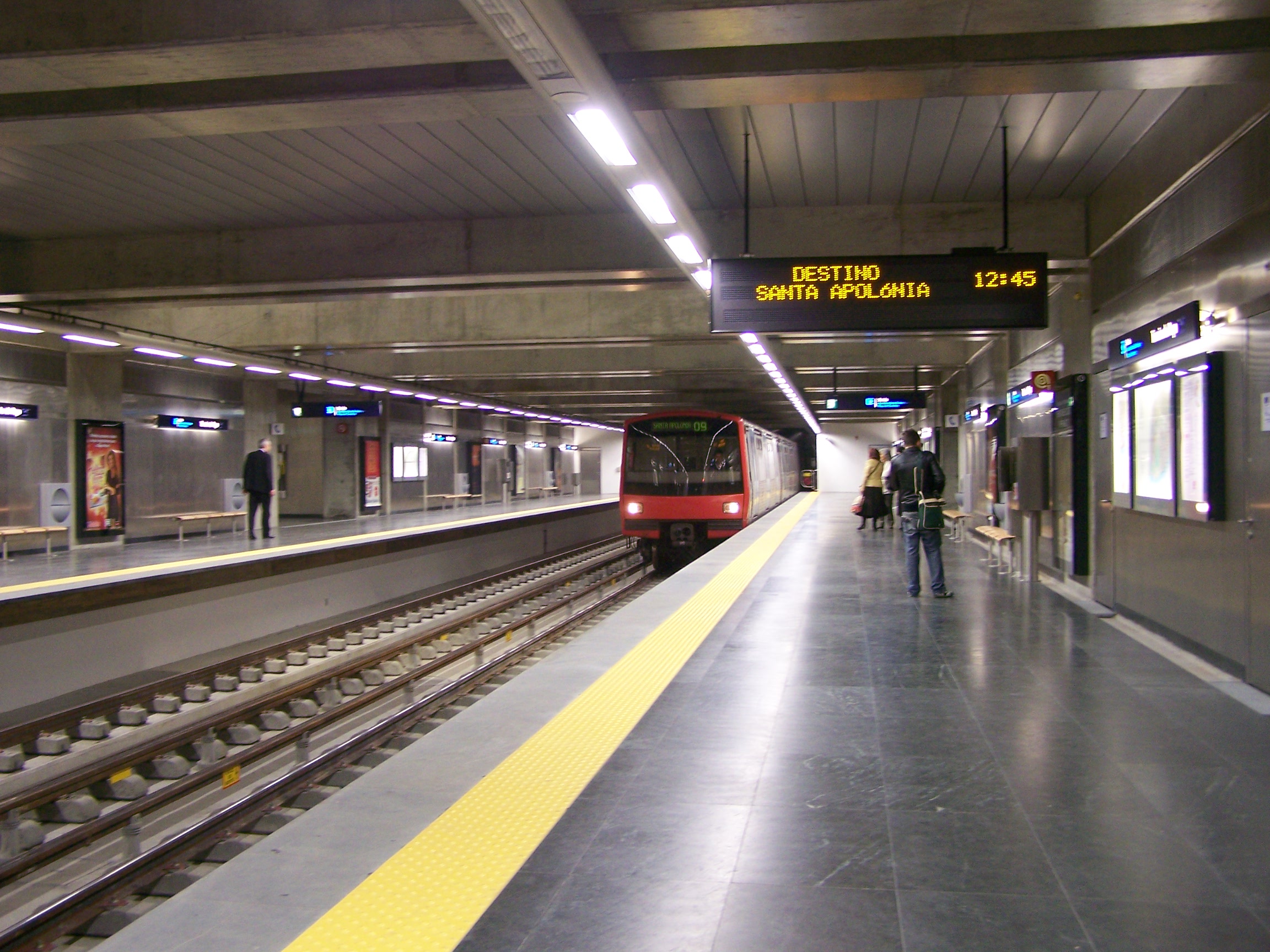 |
Another great way of getting around Lisbon is by Metro. (see the zoomable metro map). The closest stops to ISEL are Olivais Metro Station and Chelas Metro Station or you can download the map here. |
By Tram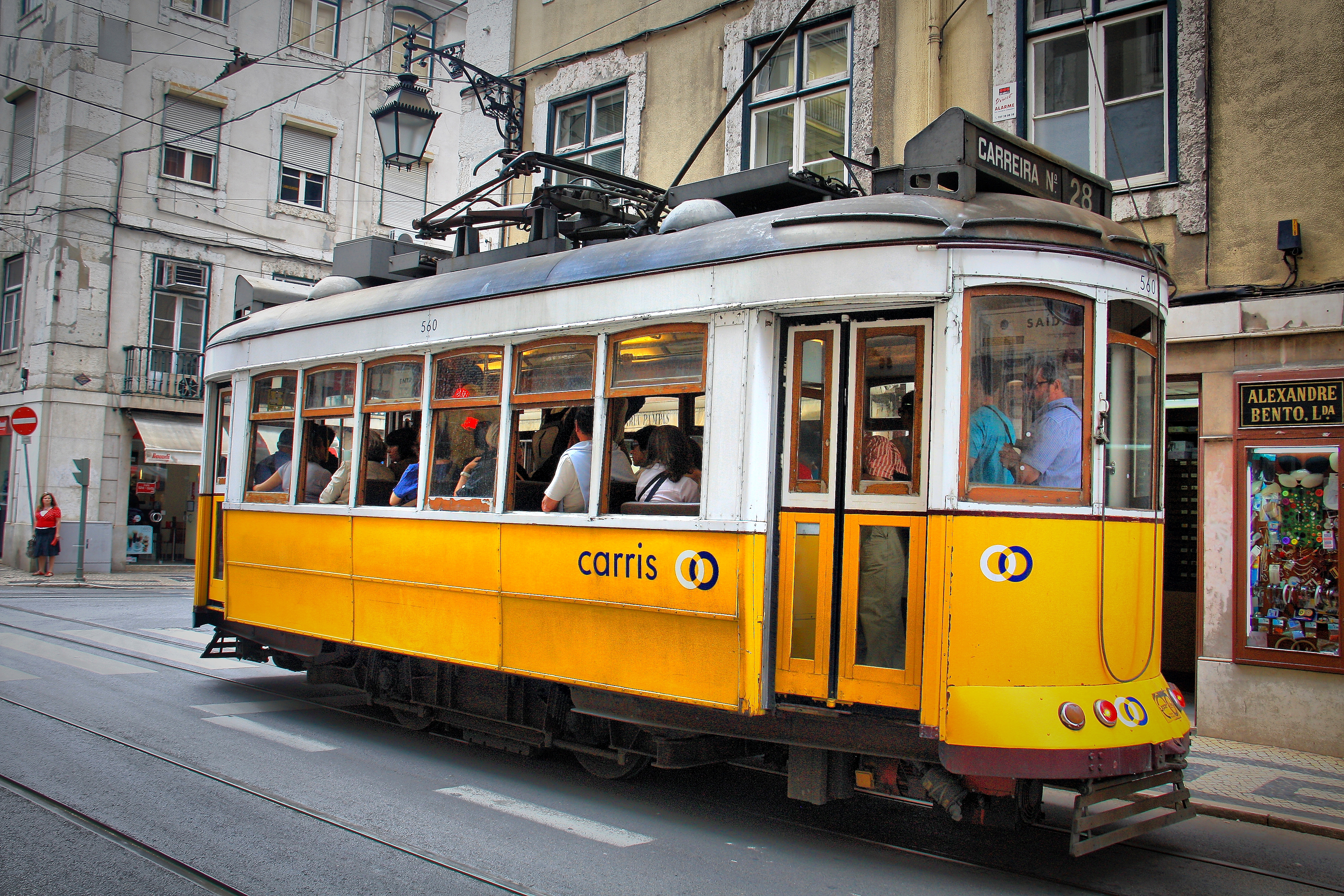
|
The current lines are: 12 - Praça da Figueira - Miradouro de Santa Luzia circular route 15 - Praça da Figueira - Algés 18 - Cais do Sodré railway station - Cemitério Ajuda 25 - R. Alfândega - Campo de Ourique 28 - Praça Martim Moniz - Chiado - Campo de Ourique The five remaining lines only operate in the southern centre and west of the city. Despite the relevant tourist attraction, those lines are still very important because of sections of the city's topography that can only be crossed by small trams. Tram 15 also connects the entire western river front of the city to the centre and allows a better flow of passengers with the bus system towards an area that still is not served by the metro. |
By Bus |
The closest bus stop to ISEL is at the Rua Conselheiro Emídio Navarro. Busses for this stop are from CARRIS BUSES. You can follow the bus connections at ISEL in realtime here. |
By Taxi |
ISEL is easily reachable by taxi |
By Car |
Lisbon is connected to its suburbs as well as throughout Portugal by an extensive motorway network. There are three circular motorways around the city; the 2ª Circular, the CRIL, and the CREL. |
On Foot
|
All chosen hotels are within easy walking distance of ISEL. (see hotel page) |
ISEL Location Maps
|
|
|







